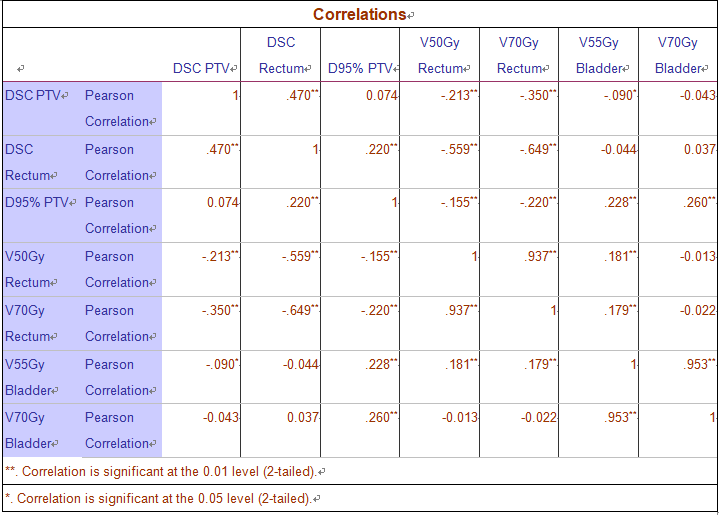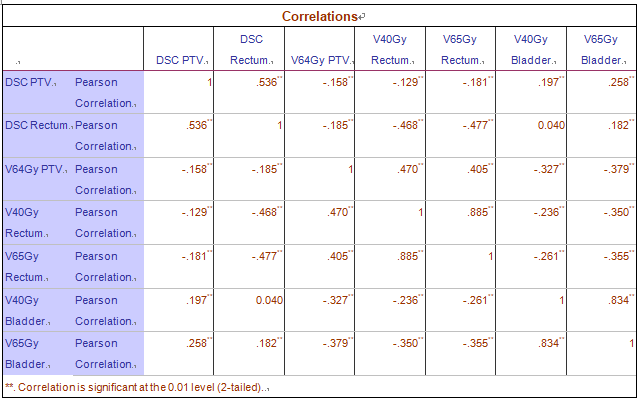The relationship between contour agreement and dosimetric impacts in CBCT for prostate radiotherapy
Helen Pang,
China, Hong Kong Special Administrative Region
PO-2325
Abstract
The relationship between contour agreement and dosimetric impacts in CBCT for prostate radiotherapy
1Pamela Youde Nethersole Eastern Hospital, Clinical Oncology, Hong Kong, Hong Kong (SAR) China
Show Affiliations
Hide Affiliations
Purpose or Objective
Most of the treatment machine in use is incapable to visualize the instant dose distribution during online cone beam computed tomography (CBCT) review. The level of contour alignment is taken as a reference for the manual registration. This study aims to investigate the relationship between contour agreement and dose parameters in patients who underwent radical prostate or post-prostatectomy CBCT-guided radiotherapy (RT).
Material and Methods
30 prostate cancer patients who received primary radical RT or post-prostatectomy salvage RT were retrospectively recruited (15 patients in each group). They had 9 and 8 CBCT datasets respectively. The planning Computed Tomography (pCT) images were deformed to the CBCT for dose calculation. Each set of deformed pCT was then automatically registered to the pCT five times by using different region of interests (whole body, the default setting in the Varian system, planning target volume (PTV), sacrum, and manual registration) to account for inter-operator registration preferences in the clinical setting. Per registration approach, this was followed by dose calculation and examination of the contour agreement by the dice similarity coefficient (DSC).
Results
A total of 675 and 600 registrations were analyzed in primary radical RT and post-prostatectomy salvage RT groups respectively. Tables 1 and 2 showed the results of the correlation between the contour agreement and the dosimetric metrics in primary radical RT and post-prostatectomy salvage RT groups respectively. In the primary radical RT group, superior alignment in PTV resulted in lower doses to the rectum and bladder. The rectal agreement was also positively associated with target coverage (D95% PTV) and negatively with the rectal dose. A decrease in the rectal dose, but with inferior bladder sparing was observed when improving the target coverage. For the post-prostatectomy salvage RT group, higher level PTV or rectum agreement was decreased with the rectal dose, however, lowered the target coverage (V64Gy PTV) and bladder preservation. When superior target coverage was achieved, it was decreased with dose to the bladder but sacrificed the rectum sparing.
Table 1: Correlation analysis for DSC PTV, DSC Rectum, D95% PTV, V50Gy Rectum, V70Gy Rectum, V55Gy Bladder and V70Gy Bladder in primary radical RT group

Table 2: Correlation analysis for DSC PTV, DSC Rectum, V64Gy PTV, V40Gy Rectum, V65Gy Rectum, V40Gy Bladder and V65Gy Bladder in post-prostatectomy RT group

Conclusion
Rectal-based matching is recommended for online CBCT review in prostate cancer patients. The rectum alignment is associated with the level of target coverage and rectal dose in the primary radical group. Although PTV and rectal agreements also correlate to the rectal dose, the rectum is more accessible than the PTV which is a cavity in the post-prostatectomy group. However, a perfect contour alignment is not suggested as it may lead to an overdose of OARs or under-dose to target.